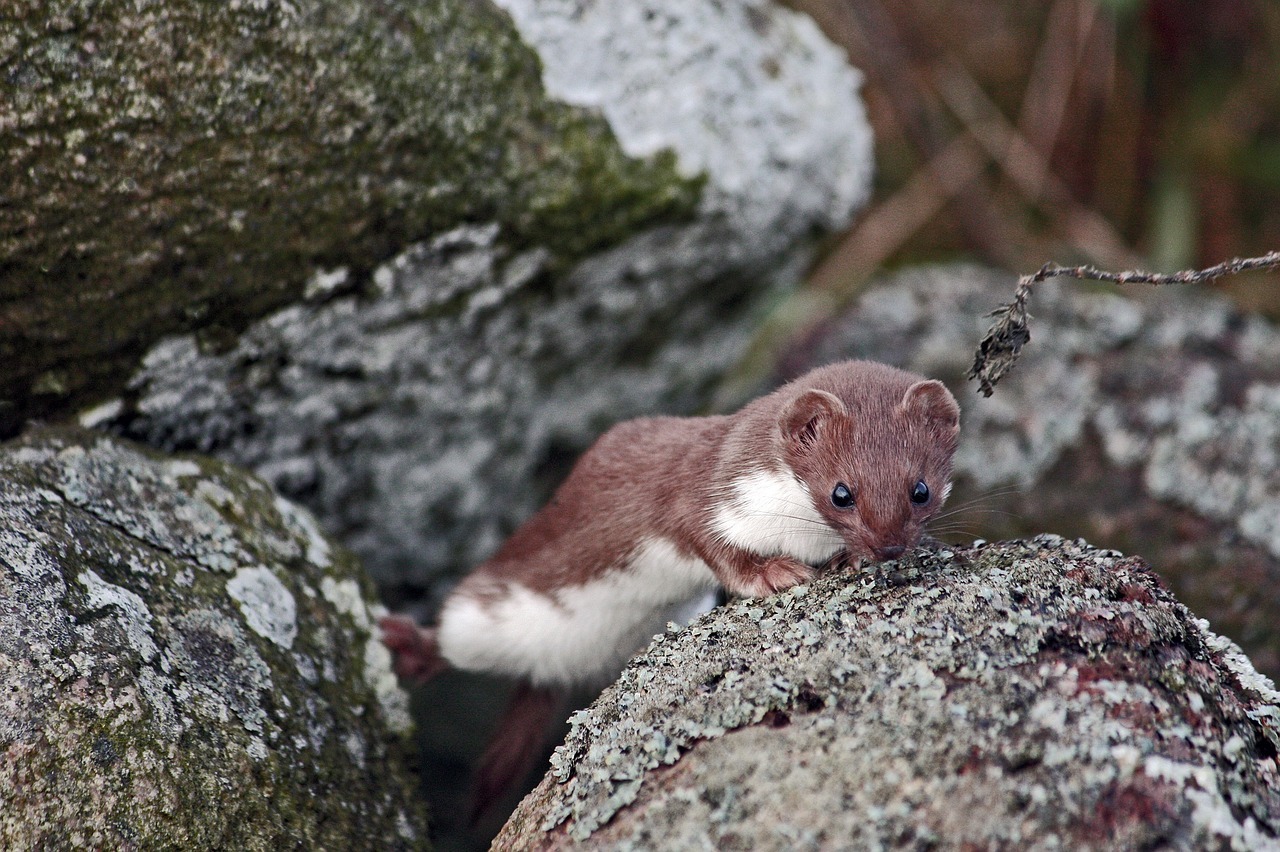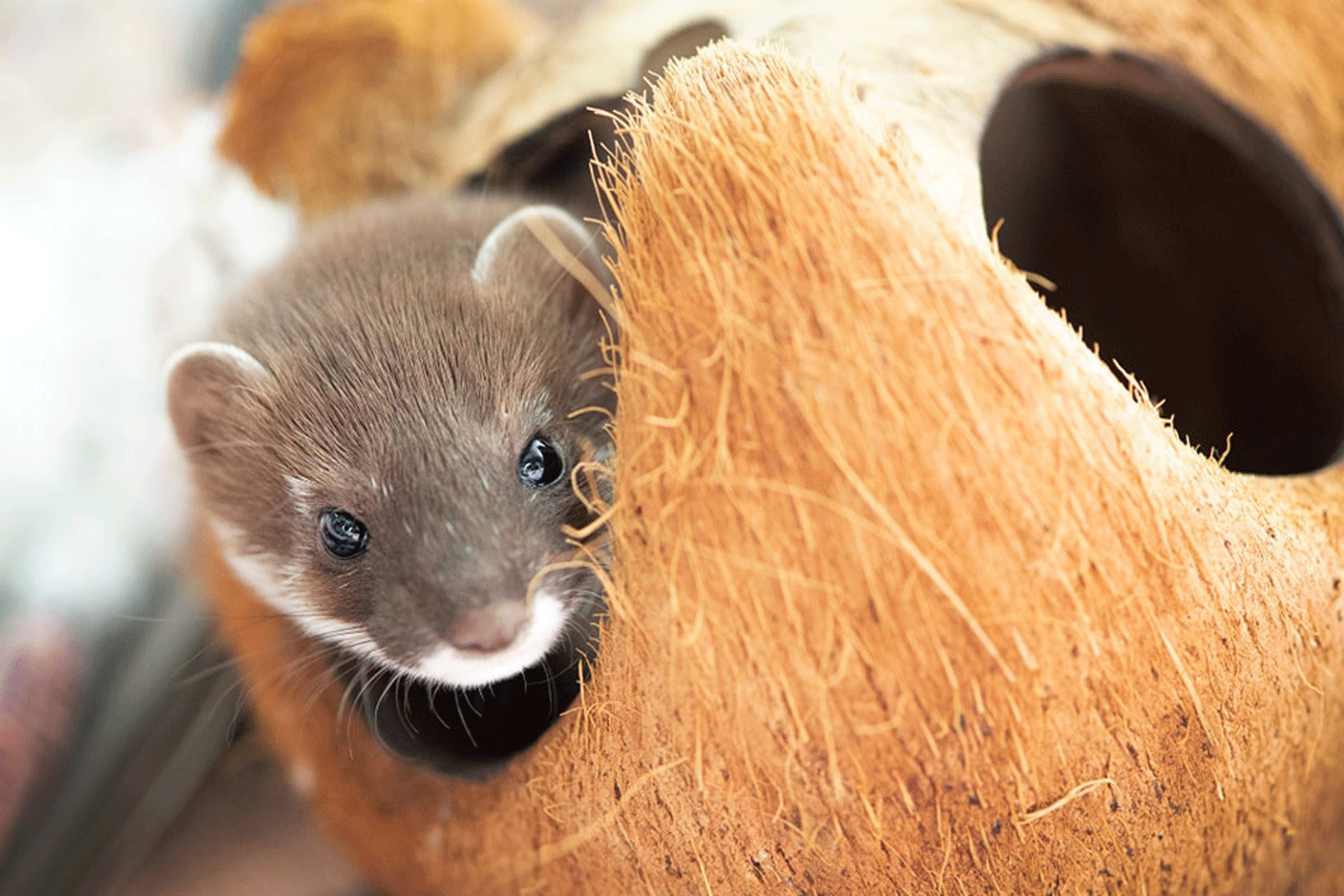
Facts
A member of the mustelid family, these brown backed and white throated animals can be distinguished from the similar looking weasel by the black-tipped tail, and its slightly larger size. It's bounding gait can be seen its preferred habitats of sand dunes, grasslands and heathlands.
Length: 24-32cm
Tail: 9-14cm
Weight: 140g-450g
Diet: Carnivorous - rabbits being a particular favourite, but will take rodents and small birds.
Average Lifespan: 2 to 5 years
When to see them: All year round
UK population: 438,000
UK conservation status: Green
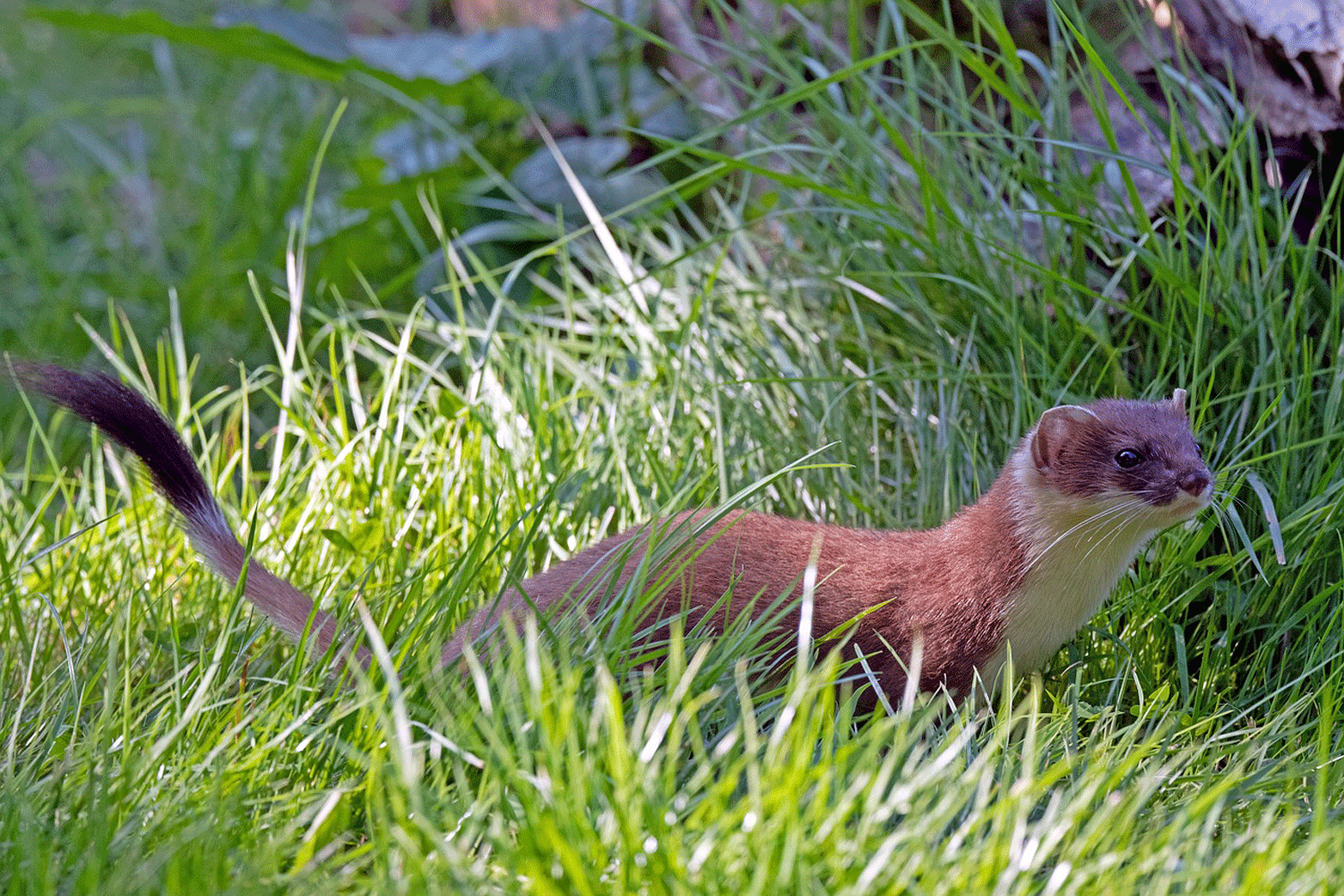
Behaviour
Predominantly solitary, stoats occupy overlapping territories marked with scent, though these are not regularly guarded. Using tree hollows, old rabbit warrens and opening under tree roots, the stoat opts to make their dens at ground level, but as remarkably agile animals, they can climb trees to prey on birds too. They are known to hunt and forage within their home range which varies between male and females, usually making trips of two to three hours up to 100 metres from their dens.
Stoats breeding season takes place in summer, but like badgers use delayed implantation, so don't give birth until the following spring, which can consist of up to 13 kits, depending on how much food availability. Young stoats develop quickly and start hunting for themselves at around 11 weeks old.
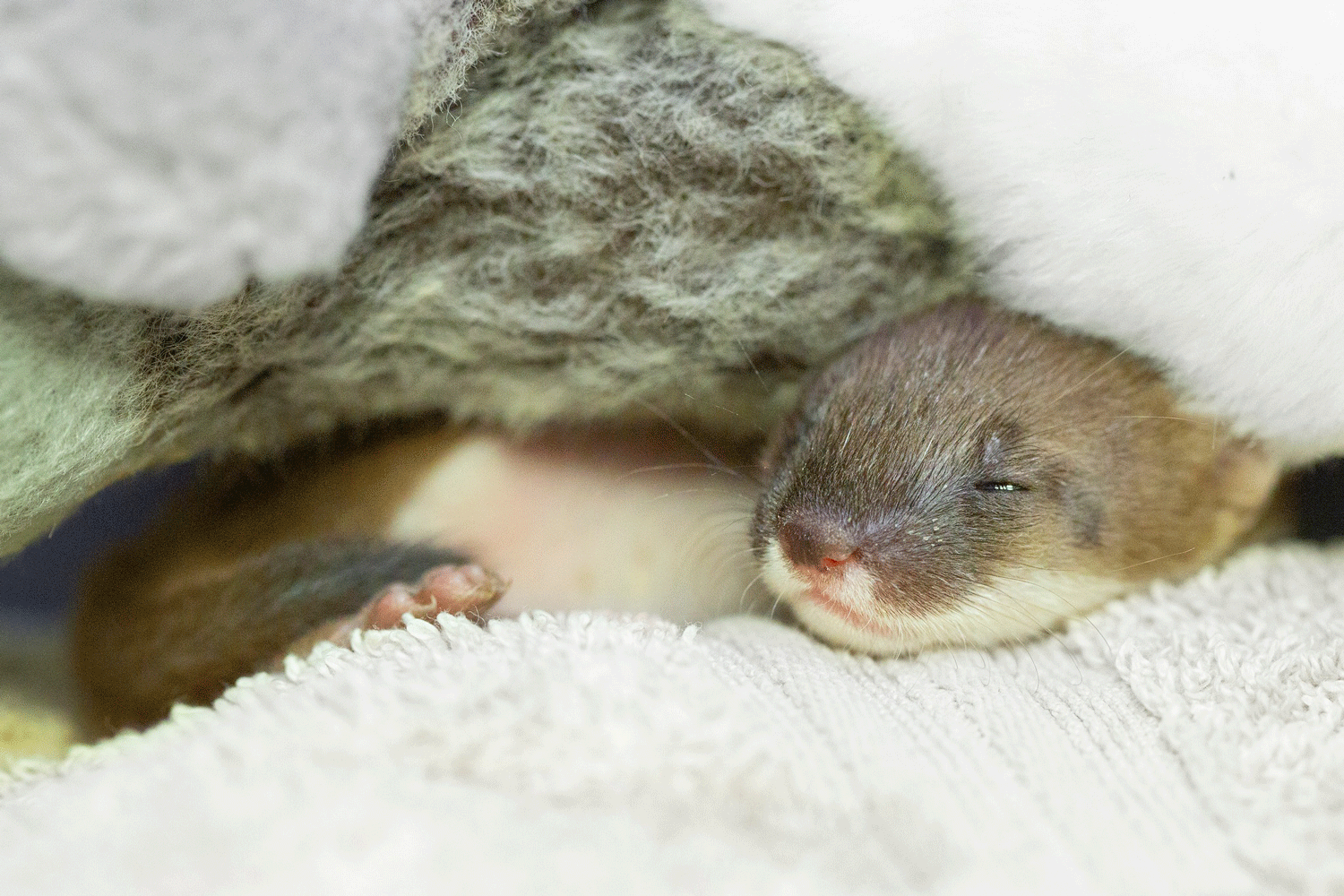
Their Threats
Persecution: Stoats are often legally trapped and shot due to their predation of game birds.
Decline in nest sites: The loss of hedgerows and wild spaces will have a negative affect on stoat populations.
Loss of food: With their preferred prey, the rabbit, declining, this could have a knock-on affect for the stoat population.
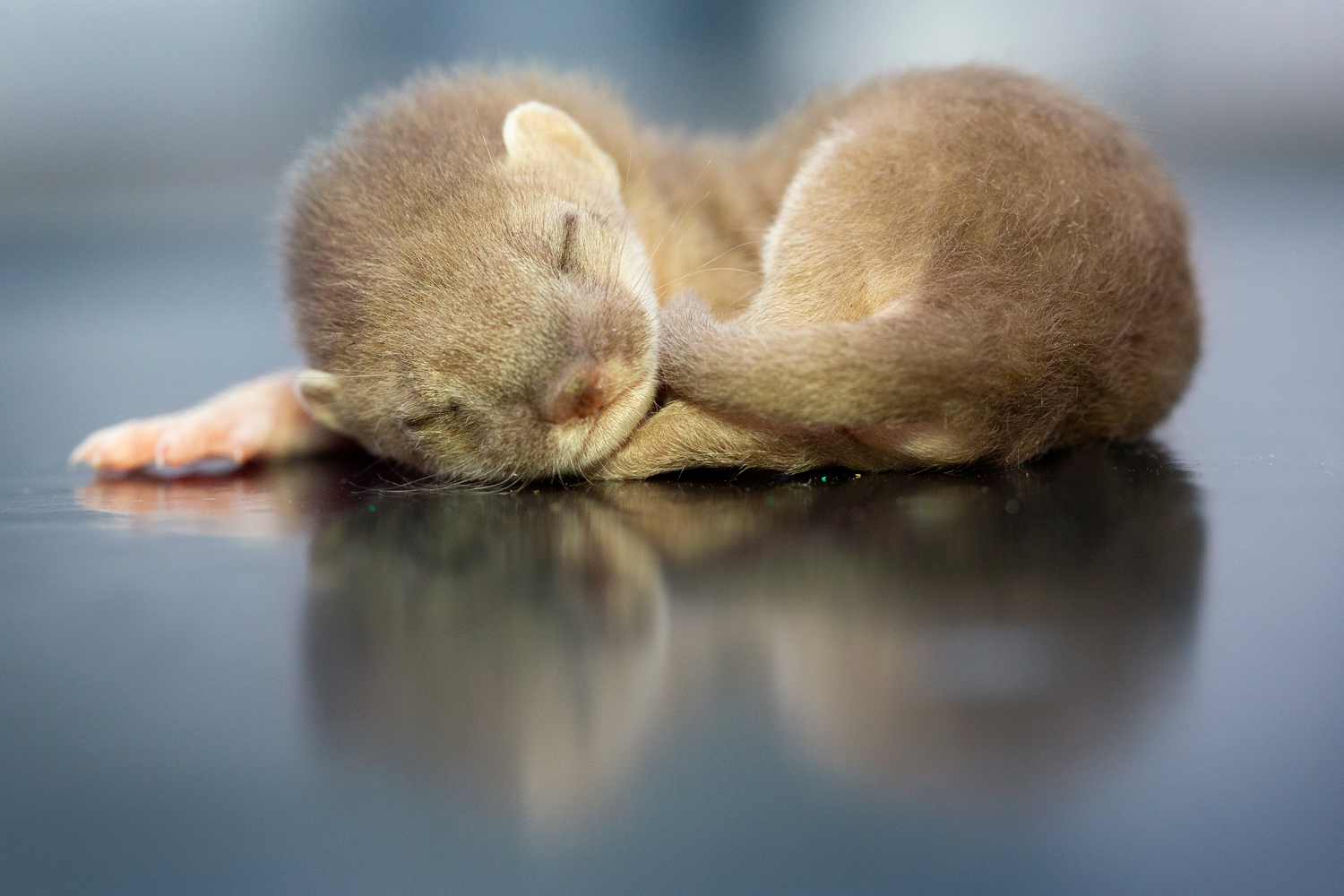
How you can help
There are a number of simple ways you can help stoats:
> Allow wild spaces to flourish in your garden
> Use hedgerows instead of fences to prevent habitat fragmentation
> Keep a note of a local wildlife rescue in case you find an injured or orphaned stoat.
We need your help
Any help you give can make a huge difference and keep us saving wildlife.
